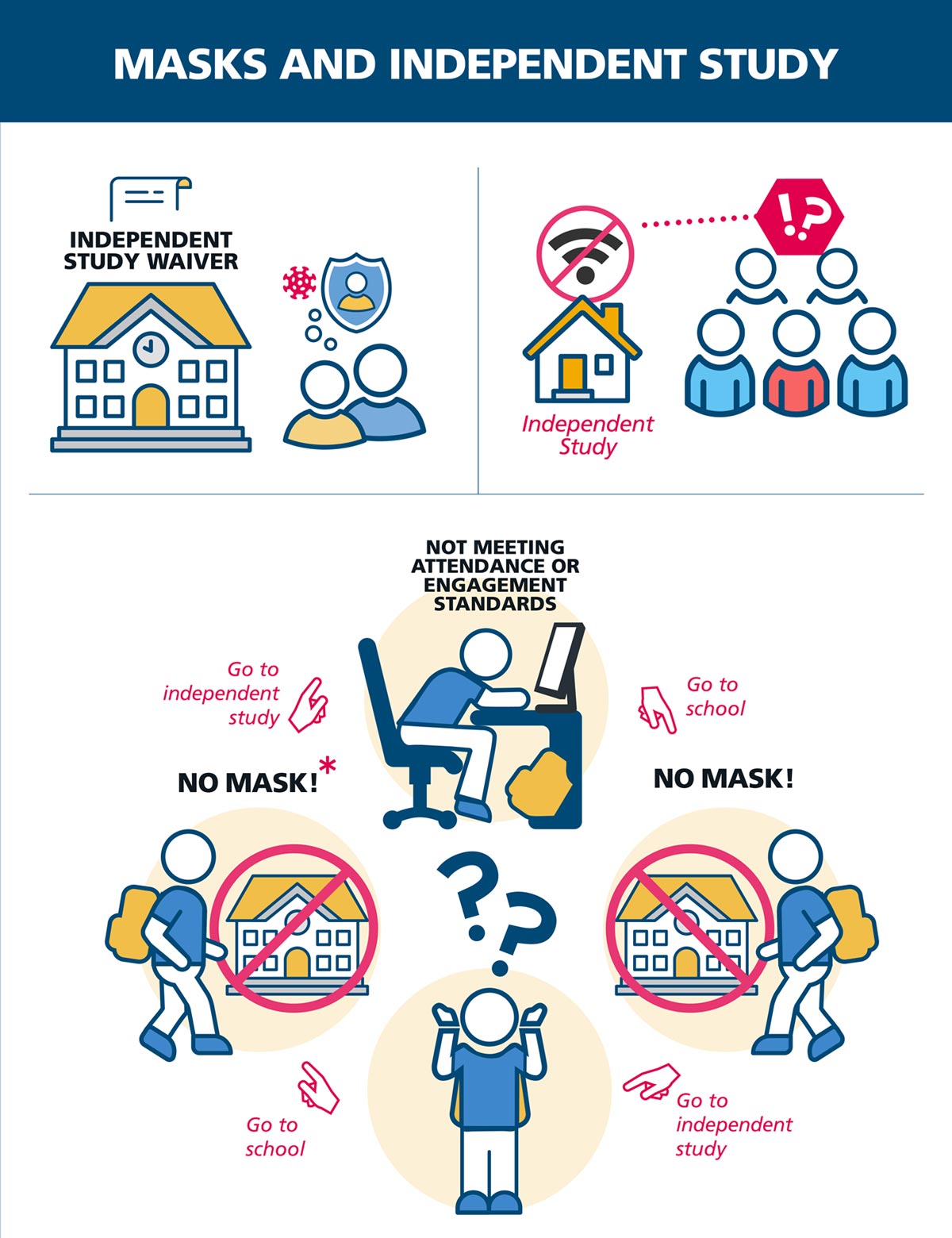“The delta variant behaves uniquely, differently, from past strains of the virus that cause COVID-19,” said CDC Director Dr. Rochelle Walensky in a press call. “Information on the delta variant from several states and other countries indicate that, in rare occasions, some vaccinated people infected with the delta variant after vaccination may be contagious and spread the virus to others.
This new science is worrisome and, unfortunately, warrants an update to our recommendations.”
Since physical distancing is not possible in many school facilities, CDPH is requiring universal masking inside all K-12 schools, noting that “masks are one of the most effective and simplest safety mitigation layers to prevent in-school transmission of COVID-19 infections and to support full-time in-person instruction.” Health officials said they expect that the mask mandate will help facilitate a full return to classrooms by encouraging parents wary of the health risks to send their children to school and by reducing the number of days lost to sickness. The state also mentioned that, in crafting the guidance, it strived for “simplicity” because a range of masking rules for different situations can create confusion and complicate enforcement.
CDPH guidance released at 3 p.m. originally stated that “schools must exclude students from campus if they are not exempt from wearing a face covering under California Dept. of Public Health guidelines and refuse to wear one provided by the school,” and that “schools should offer alternative educational opportunities for students who are excluded from campus because they will not wear a face covering.”
However, by 7:25 p.m., the department tweeted that state school guidance would be clarified to give local education officials discretion about how to enforce the mask mandate.
As of this writing, counties have once again started to require masks indoors as a result of the surging spread of the delta variant of the COVID-19 virus. Some of California’s smallest school districts told CalMatters in a July 15 article that, should the state leave enforcement to local educational agencies, they will refuse to send kids home for not wearing a mask.

“District and county board members must consider how new laws will be implemented and consider the real-world impacts such laws may have, even if these impacts may not be readily visible to those who are not engaged in the daily work of serving students. The state needs to consider all the implications of its legislation and guidance and address these issues in a way that allows local educational agencies to achieve the shared goal of returning all students to the classroom safely.”
For more information on independent study requirements for the 2021–22 school year, see page 6.
The recommended quarantine period for unvaccinated close contacts who were not wearing masks during an indoor exposure is still 14 days. However, those unvaccinated contacts that remain asymptomatic may discontinue self-quarantine under some conditions.